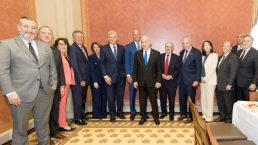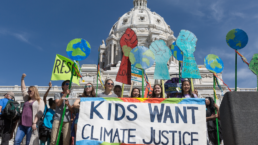The military often targets lower-income BIPOC for enlistment. What will it mean for a prospective recruit to not have to choose between debt and service?
By Frances Nguyen, Prism
Earlier this month, 19 House Republicans, led by Rep. Pat Fallon (R-Texas), sent a letter to President Joe Biden to raise concerns over the “unintended consequences” that his student loan relief plan would have on the military’s recruitment efforts: “By forgiving such a wide swath of loans for borrowers,” the letter reads, “you are removing any leverage the Department of Defense maintained as one of the fastest and easiest ways to pay for higher education.”

The plan would forgive up to $10,000 for borrowers of federal student loans who make less than $125,000 per year, and up to $20,000 for recipients of Pell Grants, a financial award for students from families with incomes below $60,000 annually. Under the plan, about 20 million borrowers could have their balances eliminated.
Indeed, one of the many reasons young recruits join the U.S. Armed Forces is to finance their education, particularly among low-income recruits and recruits of color. A 2015 survey from the Institute for Veterans and Military Families at Syracuse University found that 53% of veterans were motivated into military service for educational benefits. The relief plan would undoubtedly impact that side of the sales pitch for military recruitment, but how deeply will it undermine recruiting efforts—and is the crisis of recruitment actually a crisis?
Recent Posts
Why Are Democratic Lawmakers Still Meeting With Netanyahu?
July 12, 2025
Take Action Now Pictures show Democrats like Chuck Schumer standing next to Netanyahu, smiling.By Sharon Zhang, Truthout A bipartisan group of…
Stop Israel’s Dystopian “Humanitarian City” Plan—Before It’s Too Late
July 11, 2025
Take Action Now For the past 20 months, the world has watched—and largely enabled—a genocidal campaign in Gaza. Over 55,000 Palestinians have been…
The “Liberal” International Order Is Criminalizing Palestine Protests
July 11, 2025
Take Action Now As Western governments repress Palestine solidarity and enable Israel’s impunity, the “liberal international order” is no longer…
Politicians Are Betraying Gen Z On Climate
July 10, 2025
Take Action Now While Gen-Zers thrift, knit, crochet, and find other ways to reduce our footprints, Trump and the GOP are greenlighting more climate…




